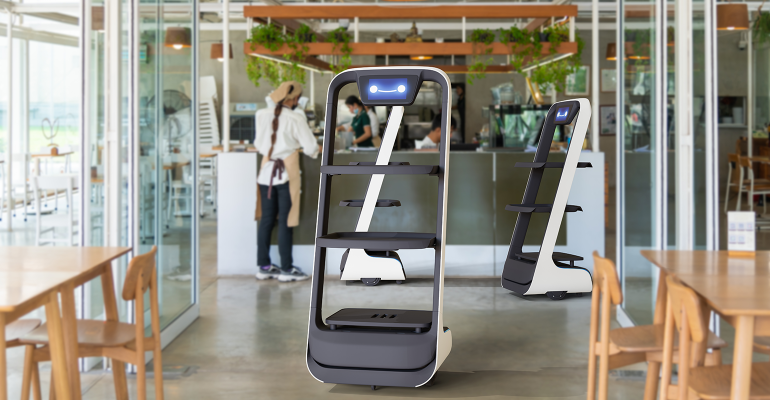This month’s question comes from Adam Klaers, executive vice president at Roy Rogers Restaurants, who commented on a LinkedIn post about last month’s article tackling the difference between customer service and hospitality. In that comment, he said, “customer service is a skill; hospitality is a mindset.” For this month’s culture question, Klaers suggested the ever-present topic of Artificial Intelligence (AI). He asks, “With more and more talk about AI, and AI specifically in restaurants, how does a company ensure that the integration of AI technologies aligns with their core values and doesn’t compromise the unique culture we’ve cultivated among our hourly employees?” Excellent question Adam, thank you. Let’s break it down.
First, to ensure that the integration of AI technologies aligns with a company’s core values, an organization must have clarified its core values, and they must be integrated into every aspect of its operations. This could be a big assumption if a company has either not established its values, vision, and mission, or if they have not reassessed them and are still working from 2019, pre-pandemic parameters. We are working in a very different environment and workplace, so it is crucial to stop and do this work first before one could even consider how to integrate AI tech in a way that will be applicable and sustainable.
Even with the whiplash speed of change in technology as AI is projecting us deep and far into a world where success will be directly linked to how technology is integrated into the restaurant systems, I stand by my position that it is to be used to supplement and automate the rote, repetitive tasks, analyzation of data and use of this information by leadership, making the employee’s job more targeted and efficient. It is not to replace employees, but to provide more time for them to work together on team-related tasks, creating relationships, thus improving the ultimate customer experience exponentially.
If one of your core values is to prioritize your people’s experiences (necessary to create a strong, successful company culture), then it is important to understand the upside and advantage AI offers not to replace your teams, but to enhance their value and effectiveness by allowing AI to take over the tasks that can be automated and need less human input. This will also allow for a much broader range of responsibilities to be tackled by your workforce, at greater speeds.
Next, how do we ensure that the integration of AI technologies doesn’t compromise a unique culture?
I believe that not only does AI not compromise a restaurant’s unique culture, but it actually allows for greater expression of a unique culture. When your employees are no longer wasting time doing menial repetitive tasks, they will have more time to focus on the behaviors around connecting human-to-human to their fellow employees and end-customers. Their diversity and uniqueness will be more apparent while the common goals of the restaurant for which they are communicating become more perceptible. In this way, your culture will thrive and be a living model of who you are, and what your brand stands for, through your people.
A common fear is that tech and AI will create job displacement due to increased automation. Employees today want to know their work has meaning and value where they can contribute. AI allows employees to do just that. They can now focus more on creative and high-value problem-solving activities where human thought, analysis with empathy, and emotions are critical in decision-making, which machines cannot replicate. This improved efficiency with empathy leads to improved customer interactions and therefore, the overall results of elevated customer experiences. Along with these enhanced customer experiences come 5-star online reviews and recommendations, and word-of-mouth referrals, which, of course, all result in increased revenue. And, as it relates to Klaers’ question, clearly, it is building your brand’s cultural reputation.
And lastly, putting it all together, how do we ensure that the integration of AI technologies doesn’t compromise the unique culture you’ve cultivated among your hourly employees?
A large majority of restaurant hourly employees are tech-savvy Millennials and Gen Z’ers, who are accustomed to the use of technology within their consumer experiences, whether for a service or product. They are more demanding, wanting more efficiency, speed, and less friction across the process, whether on the employee or the customer side. AI presents huge potential for transformative change and differentiation in this market. Embracing this new technology in restaurants communicates to its employees and customers that they are forward-thinking, current, and innovative. This could be a competitive edge over your competitors in a very crowded marketplace. It could attract more hourly employees with the right attitude, to be a part of a progressive company that shows itself to invest in making work-life better for its employees and take actions to stay ahead of the curve.
Once you put it all together, you will have the right core values and a positive company culture that attracts the right employees, aligned with those core values, who want to utilize tech in a way that allows them to show more value to their human asset as thinking, problem-solving, caring, individuals who will now have more time to foster the team connections. These relationships build a genuine “work family.” Millennials and Gen Z’ers prioritize meaningful work and authentic connections, even in hourly positions. I encourage you to forge ahead in AI, but through using applications that will enhance your employees’ (and thus your customers’) experiences, efficiency, and productivity. This will show them you care by investing in them and helping them help you run a more streamlined restaurant where the human component of our culture can shine through. This human element is the foundation of your organization’s brand and reputation.
Of course, there are a multitude of benefits from back-end operations in restaurants, ranging from predictive analytics to anticipating inventory and staffing, properly allocating resources to reduce wastage and cost overruns, etc., but that is a whole other conversation and not necessarily linked to a company’s culture.
Be the next one to have your culture concerns highlighted in the next Ask Jill! Develop Your Company Culture article. Write in your question directly to [email protected]
 AUTHOR BIO
AUTHOR BIO
Jill Raff is the globally recognized EX2CX Advisor, working with executive leaders who recognize the paradigm shift: the non-negotiable creation of a more humanized culture prioritizing their people. She helps organizations that recognize their people are their greatest asset but need help creating new systems and procedures to develop the culture resulting in higher retention and greater productivity. Companies experience employee and customer lifetime value using her methodology connecting the employee experience (EX) to the customer experience (CX) — EX2CX.
Jill grew up working with her parents, owner/operators of McDonald's franchises, starting with store No. 150. Her customer service philosophy of Transforming Transactions Into Interactions starting with the employee originated from observing her parent's work and their interactions with legendary founder Ray Kroc. EX and CX is in Jill’s DNA. Based on her diverse background working in multiple industries — and living in 7 countries — Jill developed her Inside-Out Framework based on her “3+1 Recipe” to build a culture creating attraction and retention, often described as “where McDonald’s & Michelin meet.” Contact her at [email protected].

